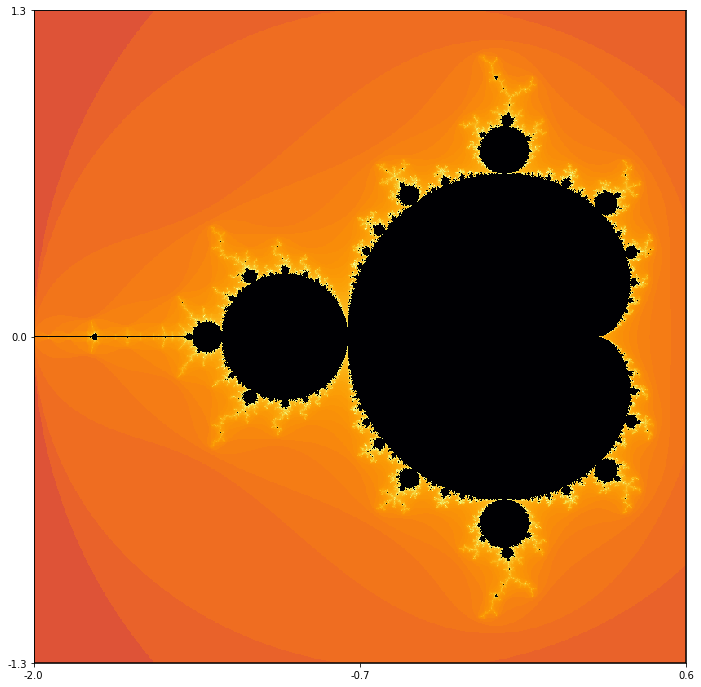Section 3.6 The Mandelbrot set
Theorem Theorem 3.5.1 expresses a fundamental dichotomy amongst quadratic Julia sets. There are two types: connected and totally disconnected. Furthermore, the type that arises from a particular value of \(c\) depends completely on the orbit of the critical point. Thus, it might be fruitful to partition the parameter plane into two portions: the portion where the critical orbit stays bounded and the portion where the critical orbit diverges to infinity. This partition leads to one of the most iconic images from the study of chaos - the Mandelbrot set.
Definition 3.6.1. The Mandelbrot set.
The Mandelbrot set is the set of all complex parameters \(c\) such that the Julia set of the function \(f_c(z)=z^2+c\) is connected. Equivalently, by theorem Theorem 3.5.1, it is the set of all \(c\) values such that the orbit of zero under iteration of \(f_c\) is bounded by \(2\)
Theorem Theorem 3.5.1 yields an algorithm to generate images of the Mandelbrot set that's very similar to our algorithm for generating Julia sets of quadratics.
Algorithm 3.6.2. The escape time algorithm for the Mandelbrot set.
Choose some rectangular region in the complex plane bound on the lower left by, say, \(c_{\text{min}}\) and on the upper right by \(c_{\text{max}}\text{.}\)
Partition this region into large number of rows and columns. We'll call the intersection of a row and column a "pixel", which corresponds to a complex value of the parameter \(c\text{.}\)
-
For each pixel, iterate the corresponding function \(f_c\) from the origin until one of two things happens:
We exceed the escape radius \(2\) in absolute value, in which case we shade the pixel according to how many iterates it took to escape.
We exceed some pre-specified maximum number of iterations, in which case we color the pixel black.
The results of this algorithm are shown in figure Figure 3.6.3. While the algorithm is very similar to our algorithm for generating Julia sets, it's very important to understand the distinctions. The Mandelbrot set lives in the parameter plane, while Julia sets live in the dynamical plane. For the Julia set of a quadratic function \(f_c\text{,}\) we fix the value of \(c\) and explore the behavior of the orbit of \(z_0\) for a grid of choices of \(z_0\text{.}\) For the Mandelbrot set, we explore the global behavior of \(f_c\) by examining the critical orbit; we do this for a grid of choices of \(c\text{.}\)

It's worth listing a few elementary properties of the Mandelbrot set.
The Mandelbrot set is bounded. In fact, our escape criterion for quadratics implies that the Mandelbrot set is contained in the disk of radius 2 centered at the origin.
The Mandelbrot set is closed. This follows fairly easily from the continuity of \(f_c^n\text{.}\)
The Mandelbrot set is connected. While this an elementary statement to understand, it's not so easy to prove.